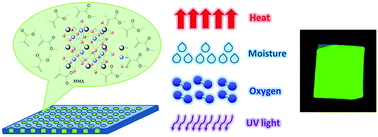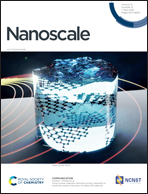Stable bright perovskite nanoparticle thin porous films for color enhancement in modern liquid crystal displays†
Abstract
Cesium-lead halide perovskite nanoparticles are a promising class of luminescent materials for color and efficient displays. However, material stability is the key issue to solve before we can use these materials in modern displays. Encapsulation is one of the most efficient methods that can markedly improve the stability of perovskite nanoparticles against moisture, heat, oxygen, and light. Thus, we urgently need a low-cost, reliable, and device-compatible encapsulation method for the integration of nanomaterials into display devices. Here, we propose a facile encapsulation method to stabilize perovskite nanoparticles in thin polymer porous films. Using porous polymer films, we achieved good photoluminescence stability in the harsh environment of high temperature, high humidity and strong UV illumination. The good UV stability benefitted from the unique optical properties of the porous film. Besides, we observed photoluminescence enhancement of CsPbBr3 nanoparticle films in a high humidity environment. The stable CsPbBr3 nanoparticle thin porous film provides high brightness (236 nits) and great color enhancement for LCDs and is characterized by simple fabrication with easy scalability, thus it is very suitable for modern LCDs.



 Please wait while we load your content...
Please wait while we load your content...